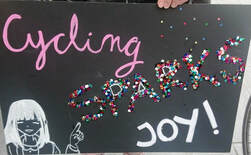
Give a bike commuter in Cork any time and date on the calendar and they’ll tell you whether it’s lighting up time or not. To know Cork takes time; days and days of cycling to and fro.
In the 1980s, 7% of trips taken in Cork city were on bicycles. By 2015, that had fallen to less than 3%; almost negligible. Hard to believe when half the car trips taken in Cork are less than 5km. A mere 20-minute cycle. Many regional European cities are striving to have 70% of people not drive to work through a combination of active and public transport. Sadly, in Cork 7 in 10 drive. But the humble bike is on the brink of revival. 12,000 bike share users have given life back to utility cycling in Cork. Over 5,000 new jobs are due to come on stream in the city centre in the next 2 years. Car parking spaces are at a premium so there is a hope that at least 10% of these workers will cycle to work. 500 doesn’t sound like a lot until you put 500 cars in a row on a road and send them all home at the same time.
To cycle in Cork is not only to understand Cork, but also life itself. To understand the risks posed by climate breakdown. To understand the challenges we face at the societal level by the obesity epidemic and physical inactivity. To understand that pollutants from internal combustion engines causes damage to our health.
To cycle in Cork is to know. To understand. To take action.

 RSS Feed
RSS Feed